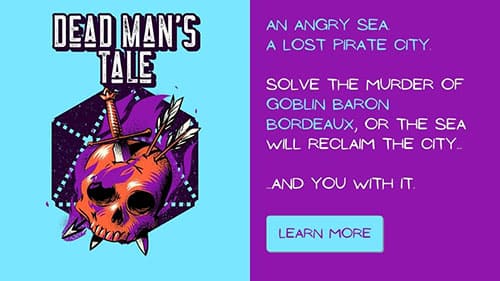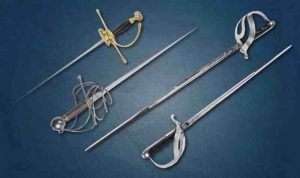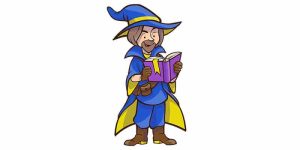While building a bard of the College of Lore for Dungeons and Dragons 5e, consider the following:
- Choose race and basic build options to suit a charismatic spell-slinger
- Lean into College of Lore abilities
- Find spells for creative problem solving and battle
- Utilize basic bard abilities
Building a bard College of Lore in Dungeons and Dragons 5e is about creating a character with charm, cunning and subtle magic. Keepers of story, this college focuses on the mystical, spell-crafting side of the bard class. Learning extra spells from any list, giving supernatural aid to allies, and psyching out enemies are this character’s best attributes.
Bards are like swiss army knives, somewhat proficient in every skill, extremely proficient in some skills, and able to play with fate using Bardic Inspiration die (d6 at first) to assist d20 rolls. These characters are highly charismatic musicians and storytellers, so they learn cunning spells of the mind. Obviously, Charisma will be your highest score, followed by Dexterity or Intelligence.
Before we jump in, you can test out this bard build in my new pirate adventure, Dead Man’s Tale. More info below.
Choose race and 1st level build options to suit a charismatic spell-slinger
Because bards rely on Charisma to cast spells, I should look for a race with some sort of Charisma bonus. Fortunately, we have several strong options. Half-elf, Tiefling, Aasimar, Yuen-ti Pureblood (Volo’s Guide to Monsters) and Satyr (Mythic Odysseys of Theros) races all receive a +2 bonus to Charisma. Jackpot.
At first level, I would set my bard up with leather armor, a rapier or longsword (depending on Strength or Dexterity lean) a hand crossbow and a lute. I love the lute/rapier combination—it seems like they could be held together in the same carrying situation. Choose either a diplomat’s pack or an entertainer’s pack—I’ll go with entertainer just for fun.
I’ll also have any 3 proficiencies to choose from, so I’ll go with Acrobatics/Athletics, something like History or Religion and Perception. Honestly, the choice here isn’t too crucial, as I’ll gain three more choices at level 3 with the College of Lore.
Again, this character is meant to be a problem solver, a suave operator. We’re talking the James Bond of Dungeons and Dragons.
Lean into College of Lore specialization
Speaking of level 3, I now get to dip into some of my specialization as a College of Lore bard.
Related Posts:
Guide to Building a Bard College of Swords: DnD 5e
| Guide to Building a Artificer Alchemist: DnD 5e
|
My basic Bardic Inspiration ability allows me to offer targets within 60 feet of me an extra d6 to ability checks, attack rolls and save rolls. I’ll have as many of these die per day as my Charisma modifier. So, hopefully I can snag at least 3 a day off the bat.
However, the College of Lore offers a bonus option for this die roll. Cutting Words is a technique that uses my Bardic Inspiration against my enemies, adding the 1d6 roll to subtract from an enemy’s die roll. Now, I have an array of uses for this bardic skill, so I must take some time to consider each use.
The next major advantage of this college is the Additional Magic Secrets ability, which grants my bard 2 spells off any list at level 6. The spells must be at a level I can currently cast, according to the character chart. This ability blows the roof off what is possible. We’re talking about a 3rd level spell from anywhere—an elemental blast from the wizard list, a spell of nature from the druid list, even something wicked from the warlocks. Spell choices will depend on the story. Now, at level 6, I should have some idea of what I’m missing.
All that said, I could have fun with conjure animals and animate dead for a little added mayhem.
Finally, the College of Lore offers the Peerless Skill ability, granting me a Bardic Inspiration roll as a bonus to any ability check.
Find spells for creative problem solving, with a few for battle
Now that we know the College of Lore basics, let’s get into the weeds with spell selection. Most of these spells will be subtle. Remember, this character isn’t a wizard—even if I do choose 2 blasty spells from the wizard list. Leaning into the character theme will make this selection fun. We should think outside the box.
Cantrips
For my cantrips, I’ll choose options like mage hand, minor illusion and vicious mockery. Mage hand creates an extended ghost hand I can use to manipulate traps or pick up small objects. It’s insanely versatile, so I like to have it as a go-to. Minor illusion is another creative choice for a creative character—it comes down to simple suggestions planted in NPC minds.
Finally, vicious mockery fits in with Cutting Words vibe. This countermeasure deals 1d4 psychic damage and grants disadvantage on my enemy’s next attack roll. Getting in my opponents’ heads and messing with their die rolls is too much fun. I’m gonna be like the mean girl in high school.
1st Level Spells
Now that we’re tapping into our spell slots, we need to plan strategically.
For damage, I’ll choose thunderwave and dissonant whispers. Thunderwave deals 2d8 thunder damage to all foes within a 15-foot cube of me. This spell is the best of both worlds between damage and field control. Plus, it keeps enemies from pulverizing through my weak AC when they fail the Constitution saving throw. Dissonant whispers, on the other hand, deals 2d8 psychic damage and causes my foe to run as far away from me as possible. However, this time they’re rolling a Wisdom save.
Other spells I choose are based around story and gameplay. Unseen Servant is way up on the list for me. Creating a simple worker out of magic may toe the line of ethics, but the possibilities here are near endless. Besides, I’m kind of a Rockstar. He could be my magical roadie.
Cure wounds (heal 1d8 + Cha mod) and detect magic are also commonly used 1st level spells that come in absolutely clutch. Healing is often neglected for carnage, which I understand. But, when the party needs it, boy, do they need it. And detecting the type and source of magic in a given situation can offer the party major clues about what’s around the corner.
Higher level spells
2nd and 3rd level spells should follow suit with the selection.
2nd level spells I would recommend include cloud of daggers, which is an area effect spell that causes 4d4 slashing damage when enemies are caught inside, and invisibility.
3rd level spell options could be dispel magic or bestow curse, focusing on my magical ability in the College of Lore. Dispel magic is a counter, which could be my specialty as my teammates play more offensively. Bestow curse fits my darker side and plays with fate a bit. I can choose between curses that cause disadvantage on different rolls or deal an extra 1d8 necrotic damage with my spell attacks.
Utilize bard abilities:
- Jack of All Trades allows me to add half my proficiency bonus (rounded down) to any ability check I make. Level 2
- Song of Rest can grant my party 1d6 HP during a short rest via my smooth melodies.
- Expertise can be used to impressive lengths, doubling the score of 2 proficient skills
- Font of Inspiration grants me all of my expended Bardic Inspiration dice on a short rest.
- Countercharm is a level-6 ability that uses your music to cut through magic that causes fear or charm. Any ally within earshot receives advantage on checks against being frightened or charmed.
- Magical Secrets offers the same effect as Additional Magic Secrets—except this ability is for all bards at 10th Gain 2 additional spells from any class.
In conclusion, playing a bard is a nuanced experience. This character is one of the most helpful in the game and can be played to tremendous effect. However, the bard’s abilities aren’t always obvious. Surprise your friends with a cunning Rockstar during your next campaign!
Related Posts:
Guide to Building an Illusion Wizard: DnD 5e
| Guide to Building a Monk Way of Mercy: DnD 5e
|







If some one needs expert view about blogging afterward i propose him/her to go to see this webpage, Keep up the fastidious job.